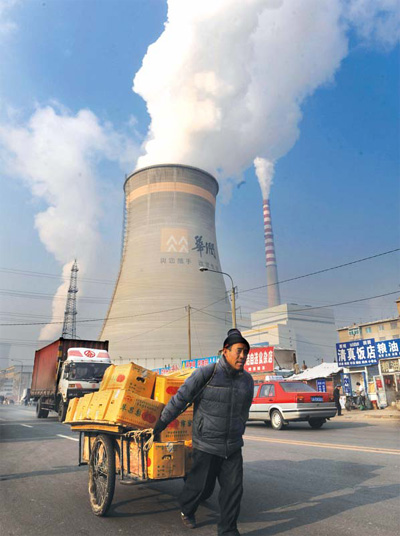Society
A hard rain is falling as acid erodes beauty
By Li Jing in Beijing and Peng Yining in Xiamen (China Daily)
Updated: 2011-01-12 07:16
 |
Large Medium Small |
 |
|
A power plant in Shenyang, capital of Liaoning province, belches out sulfur dioxide in this 2009 file photo. Sulfur dioxide is one of the major causes of acid rain. [Provided to China Daily] |
Cutting emissions
The sad findings of that report suggest the country has failed to curb environmental deterioration despite huge anti-pollution efforts, said Wei Fusheng, an academician at the Chinese Academy of Engineering.
His comments echo the growing public complaints about worsening air quality in many major cities.
Last month, Beijing's municipal government announced it had hit its target of 266 "blue-sky days" in 2010 ahead of schedule. However, the usual thick smog and the smell of smoke during winter - when the central heating system is fired up - made some citizens doubt the accuracy of the capital's air quality ratings. Similarly, in the Yangtze River and Pearl River deltas, more hazy days are recorded every year.
"That shows the existing monitoring and assessment systems for the country's environmental quality have their defects," said Wei, who added that, for one thing, nitrogen oxides and other pollutants are still left out when it comes to emissions control.
Nitric oxide (NO) is mainly derived from road transport emissions and combustion processes, such as the electricity-generating sector. It can rapidly be oxidized to nitrogen dioxide (NO2) once released to the atmosphere. Together, they are referred to as nitrogen oxides (NOx).
NO2 can irritate the lungs and lower people's resistance to respiratory infections, like influenza. Continued exposure to higher concentrations can also cause increased incidence of acute respiratory illness in children. "It is impossible to cure haze and acid rain problems in large cities without addressing pollution with nitrogen oxides," said Yang Jintian, deputy chief engineer at the Chinese Academy of Environmental Planning.
In China, coal-fired power plants are major sources of nitrogen oxides and contribute 45.5 percent to total emissions. In 2008, emissions reached 20 million tons, the largest in the world, said Yang.
As the world's biggest automaker and consumer of automobiles since 2009, China's vehicle exhaust fumes are major contributors to air pollution.
A joint study by scientists from Tsinghua University, Harvard University and the Norwegian Institute for Water Research, which was published in the American Chemical Society's Environmental Science and Technology journal in 2009, concluded that the benefits of SO2 reductions in China can be offset by increased nitrogen emissions in a few years, if the country does not adopt a multi-pollutant control strategy that integrates measures to reduce sulfur, nitrogen and particulate matter.